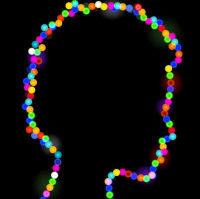The claim of the title may sound too good to be true, but recent research revealed the benefits of using augmented reality simulation, especially for training purposes. Dr Gabriel Bartal, President of Israeli Society of Interventional Radiology, discussed the study, which investigated augmented reality simulation of scatter radiation embedded in an endovascular simulator, at ECR2021.
The goals of the study were to build physicians’ awareness of dose levels during interventions; provide tools for dose reduction methods; practice dose management as an integral part of hands-on simulation (thus shortening procedure and fluoroscopy time), and provide scoring and subjective performance metrics (to measure results and improve follow-up).
State-of-the-art angiography systems are an integral part of interventional radiology (IR), but they come at a price of significant radiation exposure to the patient and staff. However, intelligent and safe use of this hardware can improve performance and minimise radiation exposure.
Over time, it became clear that a radiation awareness augmented reality simulation add-on would become integral to an endovascular simulator. This proctoring tool could help to improve physicians’ active conduct in order to reduce radiation exposure. Moreover, it would enable training in radiation protection and dose management principles in a safe environment. Therefore, it was integrated into the simulated endovascular procedure and video debriefing.
Virtual reality simulation is a validated effective teaching tool to shorten the learning curve and improve outcomes for novices without compromising patient safety. By using the “See the Invisible” application, the proctor can effectively present three basic protective principles of personnel protection: time, distance and shielding.
How does it work?
This is a radiation alertness software package add-on, connected to the ANGIO mentor endovascular simulator. Four 3D models were created for each C-arm angulation, based on published exposure data on distance and angulation. These four 3D models present scatter from 1000mGy\min to <50mGy\min and the outer layer <1mGy\min.
A strength of this proctoring application is that it allows various intervention scenarios in real life clinical settings to be carried out. Using augmented reality technology, the application shows real-time radiation scatter in the room taking into consideration the C-arm projections and other imaging parameters. The system has a visual display showing coloured indications which give the user insight about the current dose exposure in each location.
Ghent University (Belgium) has been using this technology for training purposes, and, thus, seen various results. The room’s simulated scatter radiation is displayed using real-time deformation of the 3D models. The server sends the information received from the simulator client to any display devices clients (i.e. phone/tablet), which renders the pre-calculated meshes in the simulated 3D environment. These simulations of endovascular interventions create a virtual environment that improves the interventionist’s skills in a better procedure performance. Additionally, the radiation exposure is very low.
Source: https://connect.myesr.org/course/professional-issues-radioprotection/#1
























